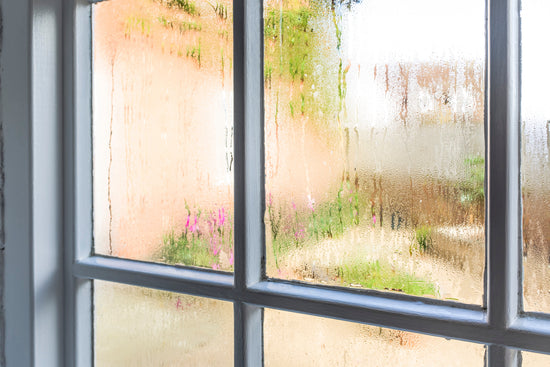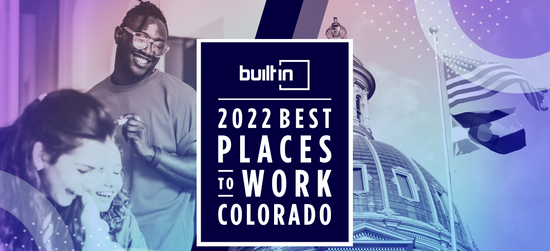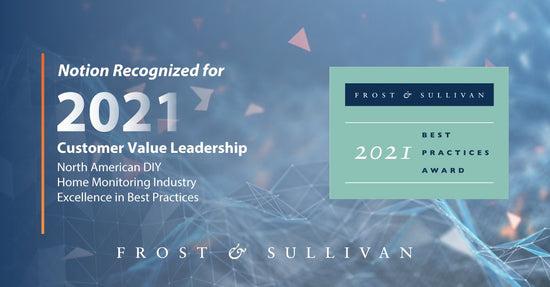Welcome to the world of homeownership!
While this is a very exciting time, it can also be extremely overwhelming.
Between packing and unpacking your life, decorating, and more, it’s unlikely that you’ve given much thought to the potential risks and dangers that could damage your home.
No need to worry! In the following post, we round up some of the biggest risks to your new home (and tips on how to prevent them!):
#1: Water Damage
Compared to fires and wind storms, water damage may not sound that serious. But without a doubt, it’s the biggest threat to your home (and wallet).
According to the Insurance Information Institute, the average claim for household water damage is $10,234, but it can be much higher depending on the severity.
What it comes down to is the location, source, and magnitude of the damage. For example, a burst pipe could result in widespread flooding, moisture buildup in your floors and walls, damage to your foundation, and more.

On the other hand, an appliance issue, such as a leaky washing machine, will be more localized and may just damage your floors and furniture.
Here’s the good news: according to Simply Justice, 93% of all water damage can be prevented.
That’s why, as a new homeowner, it’s so important to have your appliances, pipes, and more checked by a qualified professional. Regular inspections and maintenance are key to keeping your home protected from water damage.
We also recommend installing a Notion Sensor near any water sources or appliances that you want to keep tabs on. If anything triggers the sensor, it will notify you immediately and give you more time to contact a plumber before any serious damage occurs.
If you want to learn more about water damage, check out our home water damage guide!
#2: House Fires
House fires may not be as common as flooding, however, the damage they cause puts them right at the top of the list for the costliest types of insurance claims.
That’s why it’s so important to take proactive measures to help protect your home against fires.
As a new homeowner, you absolutely need to be aware of the hazards – everything from electrical fires to fireplaces, candles, and stovetop fires. If you aren’t sure what to look for, you should consider hiring someone to conduct a fire inspection in your home (this can usually be arranged with your local fire station).
A fire safety inspection may involve checking for fire hazards within your home, checking smoke alarms and extinguishers – the inspector may even recommend a fire escape plan!

Keep in mind that while regular maintenance and inspections are *very* important, the leading cause of house fires is actually unattended or distracted cooking.
Luckily, all you need to do is follow a few simple kitchen safety tips to protect you and your family from a potentially devastating home fire – like never leave food that’s cooking unattended and keeping anything that can catch fire away from your stovetop.
It’s also important to keep a fire extinguisher in the kitchen and other rooms of that house that are susceptible to fires (and educate everyone in the house on how to use them!).
If you’re looking for that extra peace of mind, you should consider placing a Notion Sensor by your smoke alarm so you can know when they’re going off even while you’re away.

As soon as our wireless sensors hear your smoke alarm is sounding, you’ll get an alert sent to your smartphone so you can take action.
Looking for more fire safety tips? Check out our 10 simple ways to prevent a house fire.
#3: Weather-Related Damage
In addition to water damage, weather-related damage can be a major risk to your home.
In fact, according to the Insurance Factbook, between 2009-2016, wind, hail and weather-related water damage accounted for 51% of all property loss claims.
So what exactly constitutes weather-related damage? Well, it can be anything from fallen trees, to hail, ice dams, wind damage – basically any damage caused by Mother Nature.
And while many of these damages are unavoidable (it’s hard to defend against a tornado), you can definitely reduce the risk of costly damage with seasonal home maintenance.

For example, during the spring and fall, it’s important to clean your gutters to reduce the risk of water damage from build-up. It’s also important to regularly trim loose tree branches and limbs that could fall and damage your home.
How you go about protecting your home against weather-related damage really depends on your environment. For example, if you live in an area that’s prone to hurricanes or severe thunderstorms, it’s important to be prepared for any unwanted damage caused by flooding.
#4: Frozen Pipes
As the temperature outside drops, the risk of your pipes freezing rises.
Not only can this be a huge pain, but it can also be very expensive! According to the Insurance Institute for Business & Home Safety, a burst pipe can cost upwards of $5,000 in water damage.
The good news is that it’s possible (and sometimes quite easy) to thaw a frozen pipe before it bursts. The even better news is that you can prevent your pipes from freezing – it just takes a little preparation.

Pipes most commonly freeze when they’re exposed to severe cold weather. This causes the water inside the pipe to expand which results in pressure build-up.
So how to do you keep this from happening?
First off, keep your heat on! While this can be expensive during the colder months, it’s a lot cheaper (and less stressful!) than dealing with a frozen or burst pipe.
For this, we recommend keeping the temperature in your home above 55° F.
This even goes for when you are away! It may seem intuitive to turn down the heat while you’re not home, but if the temperature dips outside, your pipes could be at risk.
If you’re planning on leaving your home unattended for an extended period this winter, you should also consider installing a Notion temperature sensor in your home. When the sensor detects a change in temperature (if it gets too hot or too cold), you’ll receive an alert on your smartphone.
Dealing with an already frozen pipe? Check out our guide on what to do if your pipes freeze.
#5: Carbon Monoxide
Carbon monoxide (CO) is a colorless, odorless gas that can cause health problems before you even notice that it’s present.
In fact, according to the Centers for Disease Control and Prevention (CDC), each year, more than 400 people die from this “silent” killer.
Contamination usually happens when a type of organic fuel (coal, oil, or gas) is burned without any proper ventilation. Common sources of CO include gas space heaters, wood stoves, fireplaces, kerosene heaters, gas water heaters, tobacco smoke, and automobile exhaust.
While most homes these days already have a CO alarm installed, it’s important to double (and maybe even triple!) check that it’s working. The National Safety Council recommends changing out your CO alarm batteries when you change your clocks every spring and fall.

It’s also important to have a qualified technician service your HVAC, heating system, water heater, and other coal, oil, or gas appliances every year. These appliances can leak carbon monoxide so it’s important to make sure they’re well-maintained.
Lastly, remember to never heat your home with a gas oven or use any gasoline-powered or coal-burning devices inside your home.
Thanks for reading! As a new homeowner, we hope that you learned a few new things about the risks in the home and how to prevent them. Stay safe!





